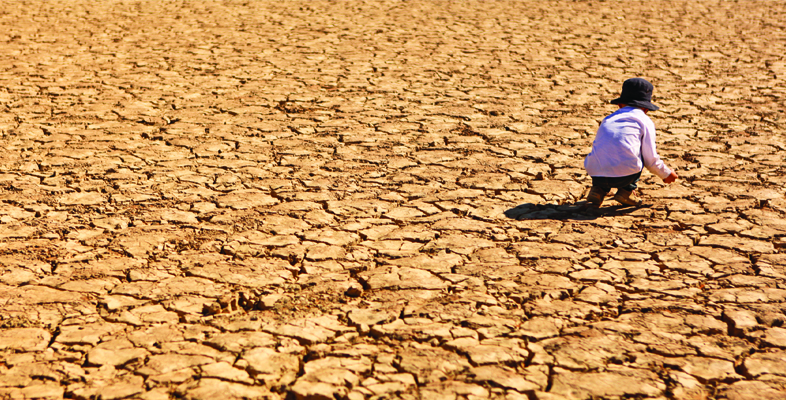5.1 Thinking materially: children, nonhumans and Common Worlds
You will now look at a different – and possibly counter-intuitive – way of understanding contemporary childhoods. Kraftl, in the final section of his chapter, which forms the reading for Activity 9, suggests the need to ‘decentre’ childhood in order to understand it better. Rather than focus directly on childhood as Childhood and Youth Studies has always tried to, it may be better, he argues, to look at the relationships and interconnectedness of things around children.
Kraftl bases this idea on the example of a totem pole made out of plastic waste by some of the young people he has worked with. He discusses how the children and young people used plastic to transform their ideas about waste and turn rubbish into art. Using this example, Kraftl discusses how children can transform plastic and use it to shape their thinking. In doing so he shows how children’s thinking can be critical, nuanced and considered.
Activity 9
Read Changing environments - Thinking materially: children, non-humans and Common Worlds [Tip: hold Ctrl and click a link to open it in a new tab. (Hide tip)] , then answer the following three questions.
1. Fill in the following words from the drop down menus.
a.
Unsettle the students and make them think differently about plastics?
b.
Function as an anti-litter campaign?
c.
Raise money for charity by buying things in charity shops?
d.
Shame the children’s parents into buying fewer plastic toys?
The correct answer is a.
3. How did making the totem pole challenge students’ thinking?
Discussion
It acknowledged the lives of the plastics and made students think about where they had come from and why.
It transformed waste into something with value.
It asked students to think of both the positives and negatives of using plastics.
The Plastic childhoods project examines the many different ways in which plastics appear, travel through and also disappear in children's lives. It also acknowledges how concerned children are about plastics but how there is a need for a more nuanced understanding about them – not all plastics are ‘bad’, some are useful and many can be transformed by being recycled into art or other forms.
The value of Kraftl’s work, and of Childhood and Youth studies more generally, is that it shows the nuances of young people’s thinking, their ability to engage critically with global problems and take action on behalf of their generation and future generations.
Children and young people are not only demanding an end to current environmental policies but are demanding justice: justice for themselves and future generations, justice for the non-humans creatures in the sea and in the forests and a fairer redistribution of the risks and benefits inherent in the global economic system.
